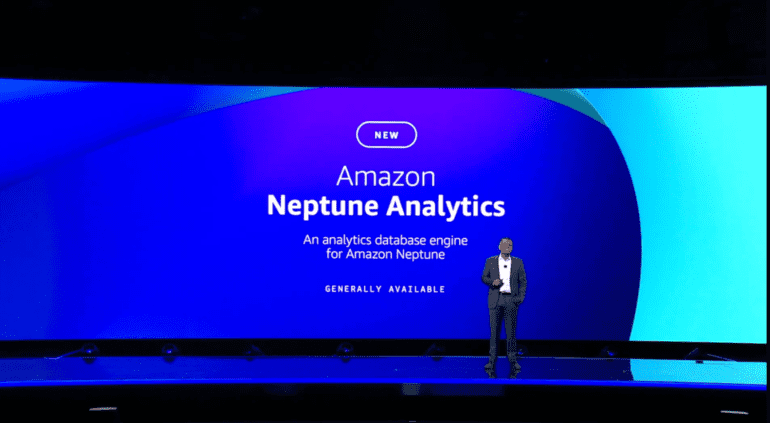TL;DR:
- AWS introduces Amazon Neptune Analytics, combining graph and vector databases.
- This innovative solution simplifies data analysis, allowing customers to uncover hidden relationships.
- Neptune Analytics is a fully managed service, automating infrastructure management.
- Ray Wang, Founder of Constellation Research, lauds the fusion of vector and graph technologies.
- Available as a pay-as-you-go service in seven AWS regions, Neptune Analytics empowers organizations to harness their data.
Main AI News:
In a strategic move to settle the ongoing debate in AI circles regarding the significance of graph versus vector databases in the quest for accurate insights in generative AI applications, AWS has introduced a groundbreaking solution: Amazon Neptune Analytics. This innovative offering seamlessly amalgamates the strengths of both database types, marking a significant milestone in the realm of data analytics.
Swami Sivasubramanian, the Vice President of Data and Machine Learning at AWS, unveiled this game-changing tool during the AI keynote at AWS re:Invent. His announcement resonated with the intention of AWS to create a product that harnesses the virtues of both graph analytics and vector search technologies. He stated, “Since both graph analytics and vectors are all about uncovering the hidden relationships across our data, we thought to ourselves: ‘What if we combined vector search with the ability to analyze massive amounts of graph data in just seconds,’ and today, we are doing just that.”
The essence of this innovative service lies in its ability to empower customers to analyze their existing Neptune graph data or data lakes stored on S3 storage. Leveraging the prowess of vector search, Neptune Analytics streamlines the process of unearthing invaluable insights. Sivasubramanian elucidated, “Neptune analytics makes it easier for you to discover relationships in your graph with vector search by storing your graph and vector data together.”
Renowned analyst Ray Wang, the Founder and Principal Analyst at Constellation Research, hailed this development as a clever fusion of two critical technologies. He commented, “Vector databases are key for managing and querying high-dimensional data for machine learning. Graph is awesome for relationship mapping. Vectors get bogged down in dimensionality, while graphs are hard to scale. Traditionally, these two are separate. Putting them together addresses the weaknesses of the other.”
One of the standout features of Neptune Analytics is its status as a fully managed service. AWS takes on the responsibility of managing the intricate infrastructure, allowing customers to focus on problem-solving through queries and workflows. The service dynamically allocates compute resources based on the size of the graph and swiftly loads all the data into memory, enabling queries to run within seconds. This seamless integration of capabilities is a testament to AWS’s commitment to simplifying complex data analytics.
Neptune Analytics is now available as a pay-as-you-go service in seven AWS regions, including the US East (Ohio, N. Virginia), US West (Oregon), Asia Pacific (Singapore, Tokyo), and Europe (Frankfurt, Ireland). This strategic move by AWS solidifies its position as a leader in the field of cloud-based data analytics, offering a powerful solution to organizations seeking to harness the full potential of their data.
Conclusion:
The introduction of Amazon Neptune Analytics by AWS marks a significant advancement in the data analytics market. By seamlessly merging the capabilities of graph and vector databases, this innovative solution empowers organizations to extract valuable insights from their data. With the added convenience of a fully managed service, AWS is simplifying complex data analytics, making it more accessible to businesses. This development addresses critical limitations in existing technologies and reinforces AWS’s position as a leader in cloud-based data analytics solutions, offering organizations the tools they need to unlock the full potential of their data assets.

